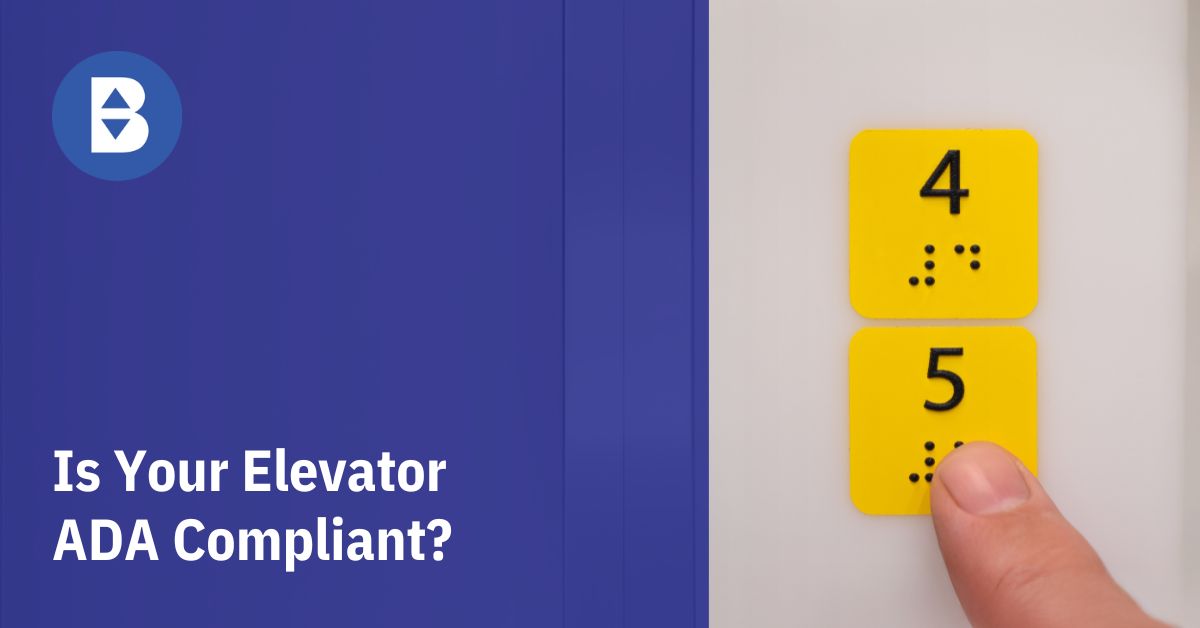
Is Your Elevator ADA Compliant?
November 5, 2025In 1990, the Americans with Disabilities Act (ADA) was passed into law, which prohibits discrimination against people with disabilities in all areas of public life, including employment, education, transportation, and all public and private places that are open to the general public. The ADA also requires that public and commercial buildings provide reasonable accommodations to people with disabilities, allowing them to access the property, including the use of elevators.
Most modern elevators are manufactured to comply; some older elevators may require modifications to meet compliance standards. Several key features of an elevator system enable compliance with the ADA.
Key Features of ADA Compliance
Let’s review features that make your elevator compliant and accessible to all.
Elevator Dimensions
To meet ADA compliance requirements, an elevator must have sufficient dimensions to allow a wheelchair to maneuver into and within the elevator car. Doors to the elevators must have a clear opening of at least 36 inches wide and remain open for at least three seconds to allow safe passage for a wheelchair.
In addition to the size of the passenger car, the elevator must also provide handrails at a standard height of 30 inches.
Elevator Control Buttons
For an elevator to meet compliance requirements, the control buttons must be easily accessible (within 42 inches of the floor) and illuminated at all times. The buttons must have tactile and braille control designators.
Additionally, call buttons must feature visual signals that display whenever a call is recorded and answered and should indicate the direction in which the elevator is traveling.
Door Safety
To ensure that passengers can enter and exit the elevator car safely, the door(s) should have several safety features, such as automatic sensors that prevent the door from closing if something obstructs the doorway.
Visual & Auditory Signals
For passengers with disabilities related to sight or hearing, there should be signals that indicate the direction of the elevator, what floor it is currently on and the floor where it is headed.
Emergency Communications
All elevators must have a means of communicating with passengers in the case of an emergency. Two-way communication must be tactilely and visually accessible and understandable by both deaf and blind persons.
Maintenance Compliance
Regular maintenance and prompt repairs are necessary to ensure an elevator remains in compliance. An out-of-order elevator could put a building out of compliance, as a mobility-impaired employee/tenant would not be able to access their building.
Our team at Buckley Elevators is knowledgeable about all aspects of ensuring elevators are compliant and accessible to all passengers. Talk to our team about the elevators in your commercial building and we can evaluate and make recommendations to help all of your passengers enjoy a safe and accessible ride.



